Eurail Passes are famous as a way to save money while exploring Europe, but they are also confusing and often misunderstood. They are still an amazing money-saving tool for certain types of travelers, and not a wise idea for most others. Before Europe introduced dynamic rail pricing (like airfares, where the price varies depending on when you buy it), a Eurail Pass was an easy way to save money since all tickets had fixed prices that were generally fairly expensive. These days most travelers can save far more money just by buying their train tickets at least a few weeks in advance.
That said, Eurail Passes are still great for longer trips and especially for people who like to make plans as they go. Dynamic rail pricing made advanced tickets much cheaper, but it also made last-minute tickets MUCH more expensive. Below we will discuss Eurail Passes and whether they are a good idea for your trip or not.
Disclosure: This is a reader-supported website and some of the links are affiliate links where a small commission is paid to help keep this site going.
Note: This article was written in 2012 and has been continuously updated since then, so all information is current as of April, 2024.
Eurail 2024 changes: New countries and a mobile version
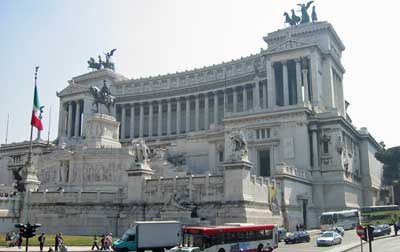
Aside from that it’s just the normal fact that they have updated the timetables as of December 2023 and have a few promotions going on, but those usually don’t happen over the busy summer season.
Eurail passes are now available in a mobile version
Until very recently, Eurail Passes were only available in paper form and they were quite confusing at first. You’d get a pass with a series of empty boxes on it and you’d need to enter your trip before you’d use your pass each day and then have the first conductor verify it. If you lost your ticket (and this was not uncommon), it was a whole ordeal to attempt to get a replacement.
Again in 2024 Eurail offers a fully mobile version that is delivered instantly to your mobile device with no delivery fee. And if you somehow lose your phone, you can resume using your Pass on your replacement with no extra headache. This is MUCH more convenient in every way and as long as you can keep track of your phone you’ll always have your train pass handy.
If your trip will be 2 weeks or less, a Eurail Pass probably won't be worth it

Eurail Passes are ideal for travelers on longer trips, and especially those who don’t want to plan all of their destinations and dates far in advance. If you have your itinerary pretty much planned out and you don’t require much flexibility, you’ll be far better off just locking in your dates and buying your train tickets as early as you can. Again, they can be surprisingly cheap if you buy 2 to 4 months out.
If you are age 27 or younger, a Eurail Pass is probably worth it

With this in mind, if you are lucky enough to still be 27 or younger, you should seriously think about getting a Eurail Global Pass Youth, partly because the sense of freedom instantly gets more expensive at age 28. The age cutoff was 25 until recently, so this change is a great deal for anyone who will be 26 or 27 at the start of their trip.
You aren’t guaranteed to save money by buying a Youth Eurail Pass, but chances are good that you WILL save money and you’ll definitely save a lot of hassle as well. Especially now that Eurail Passes come in a mobile form, it’s even that much more convenient to just hop aboard any train that is about to leave the station and not worry about buying or even having a ticket. Especially for young people, it can be really fun and exhilarating to literally just walk into a train station with your backpack and look at the departure board and then decide where to go at that moment.
If you are age 60 or over, a Eurail Pass could also be great value
Another fairly recent change is that anyone who is 60 years or older at the start of the use of a Eurail Pass now gets 10% off the normal adult fare. That new discount is going to make this a great value for many travelers who might have been on the fence about buying a full-price pass before.
>>>Check prices on Eurail Passes
If you are planning on traveling in 1st Class anyway, a Eurail Pass is probably worth it
Most 2nd Class trains provide similar comfort and legroom to Business Class airline seats, or at least close enough, so for most people it’s not worth the added expense for 1st Class. However, if you are rich or elderly or fear contact with strangers, a 1st Class Eurail Pass is probably worth it no matter what.
Not only do you get much more comfort and legroom in 1st Class, with only 3 seats across instead of 4, but there is another advantage to 1st Class on European trains. Since it’s mostly business travelers and wealthy people traveling in 1st Class, the carriages are almost always mostly empty except in the mornings and late afternoons between large cities. In 2nd Class the only available seats might be two seats in an 8-seat cabin with all the other seats taken up by a loud family or a group of rowdy friends. In 1st Class you are all but guaranteed a peaceful ride, and usually plenty of empty seats from which to choose.
A hidden Eurail Pass benefit: Making extra stops on travel days for free
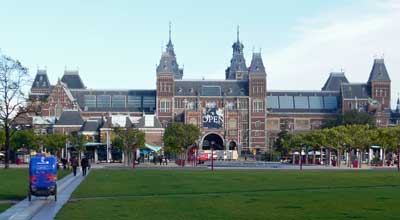
Brussels in particular is one I recommend a short stop in because the small historic center around what they called the Grand Place is amazing and gorgeous, while the rest of the city is rather boring by European standards. With a Eurail Pass you can jump off the train in Brussels and explore the city center for a few hours (luggage storage is cheap and easy) and maybe have lunch, and then hop on a later train to complete your journey to Amsterdam. There are opportunities like this on many if not most trips between larger cities, and if you buy the point-to-point tickets you have to stay on the train you booked.
Another example is the high-speed train between Barcelona and Madrid, which takes about 2.5 to 3 hours in each direction. There are some interesting cities in between, but in this case you could take a morning train from Barcelona to Madrid and then check into your accommodation, and then hop on another train from Madrid to Toledo, which takes about 30 minutes and costs €14 each way. Toledo is a historic and fascinating town, but it’s also pretty small and you can explore the main sights in an afternoon. With a Flexi Eurail Pass where you buy a certain number of travel days, you can save more money by adding on these sorts of nearby stops on travel days.
If you'll be touring major cities within ONE country, a single-country pass might be perfect, and Second Class passes are available for all ages
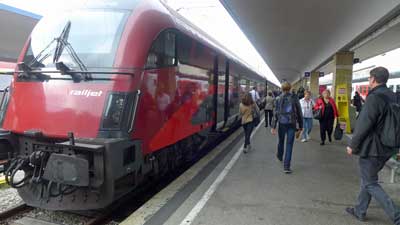
Single-country passes are still available and they MIGHT be good value for you, but it depends on which country and how much traveling you’ll be doing. If you plan on going all over a larger country such as Germany, France, or Spain, and especially if you like to make plans as you go, a Single-country pass for one of those might be your best deal. On the other hand, smaller countries (such as the Netherlands) or countries where train tickets are already fairly cheap (such as Italy) might be harder to get value out of. Long story short, for single-country passes you really need to check fares of the places you plan on going and see how they add up compared to the pass.
>>>Check prices for Single Country Passes
Eurostar (between London and Paris or Brussels or Amsterdam) tickets are now included for Eurail Pass holders for a €30 reservation fee
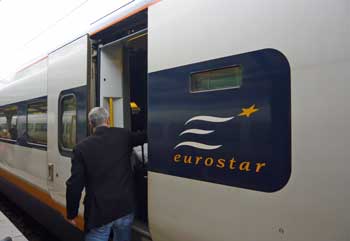
Our recent tests show that Eurostar fares one-way from London to Paris can be as low as €49 if you book about 3 months out, or as expensive as €214 for the same seat if you wait until the day of travel to buy. Round-trip/return tickets can be even cheaper if there is a promotion running.
>>>Check Eurostar prices
If you are on a really low budget, a Eurail Pass isn't a good idea
Here’s the thing. As we’ll discuss below, there are many potential benefits to Eurail Passes, and they will often save you money, but they do cost a lot and they only really save you money when traveling in the more expensive countries.
So let’s say you have a flight to Rome and then US$2,000 to last you a month after you arrive. Buying a Eurail Pass before you go would help you see a lot in that month, but you’d practically need to sleep in parks for your funds to last the whole time. You’d be better off moving slowly in the southern countries, or just in Italy itself, as a way to have the best holiday on your budget. You might also be tempted to use a Eurail Pass mostly on night trains so you can save the cost of a hotel or hostel, but those aren’t ideal for most of us.
The cheapest way to get around Europe by rail is to buy all train tickets online at least a couple months in advance. The fares are low, but they are non-refundable and non-changeable. See how far in advance you should buy train tickets to get those attractive fares.
If more than a little of your travel will be in eastern Europe, a Eurail Pass isn't a good idea
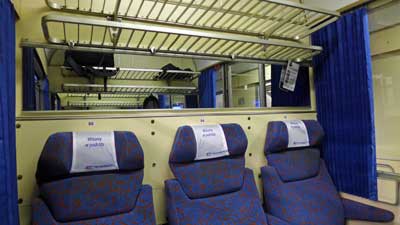
The good news is that the trains operating in this region, and the buses that operate alongside and/or where trains aren’t running, are quite cheap. So if any significant part of your trip will be into this region, a rail pass doesn’t make sense.
Basic types of Eurail Passes
Long gone are the days of the simple options, replaced by specialized passes that are meant to appeal to different styles. It should be pretty easy to figure out which is best for you, and then keep going down the page to decide if it’s worth it at all.
Eurail Global Pass – 4,5, or 7 days within 1 month or 10 days within 2 months
Until recently the minimum number of travel days with 10 days within 2 months, but now you can buy as few as 4 days within 1 month for about €200 to €250 (for first class). This can actually be an interesting strategy if you are planning many shorter and cheaper trips (like within Italy or Eastern Europe), and also 4 or 5 longer trips such as Berlin to Amsterdam. This way you can buy only 4 or 5 travel days and only use them for your most expensive travel days, and just pay as you go or buy cheap advance tickets for your other journeys.
Eurail Global Pass – 15 to 90 consecutive days
This variation allows for unlimited travel on the system for between 15 and 90 total days. They are really only a good idea for people who are certain they are going to travel very often, with much of it being in the north of Europe. The problem with them is that if you really try to get your money’s worth, you will probably ruin your trip by spending too much time on trains in general. On the other hand, if you will be in Europe for 2 or 3 months and plan on traveling around a lot, you can get a LOT of use out of a longer pass. The 3-month pass is around €900 so it’s literally about €10 per day. Imagine going back and forth between Berlin and Munich or Barcelona and Madrid for €10 per day!
One Country Pass
Obviously these are for travel within one country only. Again, they can be great deals if you plan on extensively moving around one particular country.
Where to buy your Eurail Pass
Eurail Passes are cheapest and easiest to buy online, primarily from two main sources which offer all the same products at the exact same prices:
This is a reliable company based in the Netherlands but with fulfillment offices in the US and Ireland. Price of Travel is a partner with this company, and if you use the links of this site we earn a small commission to help keep this site online. Eurail.com is usually cheaper than RailEurope (discussed below) by the way.
They were founded in the 1930s and are based in New York, but owned primarily by the French and Swiss rail companies. They offer free shipping (2 to 3 business days) on all orders of US$399 or more, although now that a mobile version is available, this is meaningless. Price of Travel is a partner with this company, and if you use the links of this site we earn a small commission to help keep this site online.
Reservations on European trains for rail pass holders
For most of the fastest trains between major cities you’ll need to reserve a seat even with a rail pass. It can usually be done just before you leave and the cost is usually around €5. Here’s a full list of which European trains require reservations and which don’t.
Reservations are required on all intercity (longer distance) trains in or involving France, Spain, Switzerland, and Italy. For most trains in Germany, Austria, Netherlands, Belgium, and most of eastern Europe, you can usually find trains that don’t require seat reservations. Often, if you don’t leave until after 9:30am or so, you can ride on any train with no seat reservation, but you have to research each leg to be sure.
How to determine which trains require seat reservations, and also get schedules
You can click on the link just above this section for a list of countries and their seat-reservation policies, but in some cases it’s actually a bit more complicated than that. For example, you can generally ride without a seat reservation on fast ICE (Inter City Express) trains in Germany if you depart after 09:30 in the morning. They do this to free up seats for business travelers who pay full fare, and they don’t mind filling up seats with rail pass holders on trains leaving a bit later.
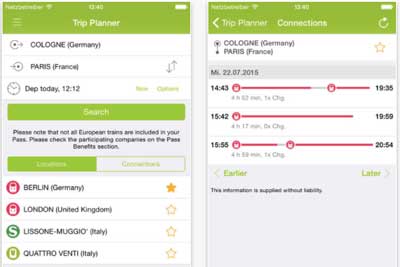
Night trains in Europe are making a comeback
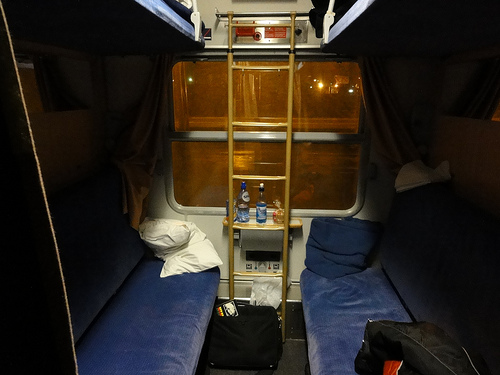
Fast forward to 2024 and night trains are not only expanding service, but they are very trendy. Some of it is nostalgia for the older way of getting around, but most of it is for environmental purposes combined with European hatred for the “low cost airline” experience with RyanAir and Easy Jet etc.
Personally I’m still not a fan of night trains because I find it difficult to sleep on them since they often get decoupled at interim stations in the middle of the night and then coupled onto other trains coming from other places, and I can’t sleep through any of that. But still, they are worth looking into and they are fun to try at least once.
A bit of warning that they tend not to be cheap and even if you have a Eurail Pass you’ll almost certainly want to book a sleeping cabin with a bunk or couchette, and that will come at an extra fee. On the other hand, if you are the sort of person who can sleep sitting upright in a normal seat, then that won’t cost any extra on most overnight trains.
Factors to consider when thinking about any Eurail Pass
Assuming you know which Eurail Saver Pass option is the best one for your type of trip by now, we’ll go over the main factors that should help you decide whether it’s the best idea for you.
Eurail Passes are best for standard ‘medium length’ journeys

However, if you are determined to travel between Rome and Paris, it’s about a 14-hour journey that will almost certainly be overnight. In this case, a cheap plane ticket is probably better, although taking shorter hops on the train is even better, so spend a day or two in Milan or Lyon on the way instead.
And of course, if you prefer to stop in various small towns between the big ones, then a Eurail Pass won’t pay off, except for the traditional kind for unlimited travel in a given period.
Eurail Passes are better value in northern Europe, France, and Spain, and poor value in Italy
Once you do a bit of research you’ll quickly learn that train tickets (and almost everything else) are much more expensive in Germany, Netherlands, Denmark, Sweden, Norway, and Finland than they are in Greece, Italy, Portugal, and Spain. With this in mind, the regional passes can make sense if you are spending time in the south, but the Global Passes almost certainly won’t. Train tickets in Spain used to be fairly cheap, but in recent years they’ve added new high-speed trains between the major cities, and these are quite expensive.
Unlike most other countries, Italy really subsidizes its train tickets so they are quite reasonable even on travel day, and very cheap if you buy a month or more in advance. For example, you can go between Rome and Florence for around €49 if you buy on travel day, and as little as €19 if you buy well in advance. In most other countries, fares are double or triple that much for similar rides.
So consider your planned itinerary. If more than half of it is in the Mediterranean countries then look into a Regional Pass or just buy tickets as you go, because they tend to be pretty cheap. But if you are planning on spending at least half your time in Paris and places to the north of it, then a Eurail Pass is probably a money saver because those tickets are expensive.
Trains are almost always better than planes
Flying sucks, even in Europe
Until you’ve experienced the joy of traveling around Europe by train you might be tempted to “maximize” your time by flying low-cost airlines between each city. This would be a mistake. In order to get truly cheap airfares you have to purchase long in advance, buying non-refundable tickets. You might also have to commit to flights in the very early morning or in the late evening, because cheap tickets on convenient flights sell out quickly.
And again, most European airports are around an hour outside of the city. They are often on the main train lines, which helps, but still you have to deal with the madness of security and also try to get there at least two hours early. From one city center to any other city center it’s about 5 hours minimum, even if they are close, and those are pretty miserable hours.
Train travel is a positive experience

Not only are all the seats comfortable on trains, but you also have an interesting view most of the time. Better still, trains deposit you in the heart of every city, which is usually the neighborhood with the cheapest hotels and food. It’s a wonderful feeling to step off a relaxing train ride, buy a hot dog or sandwich at a local shop, and then be in your hotel room only about 10 minutes later.
Eurail Passes are better than train tickets alone
As someone who enjoys the process of crunching numbers and looking for value, I have to also mention that I’d buy a Eurail Pass even if it seemed like it would cost a bit more than the individual tickets. With a pass you get an extra element of freedom that is worth a lot more than you might expect until you’ve used one.
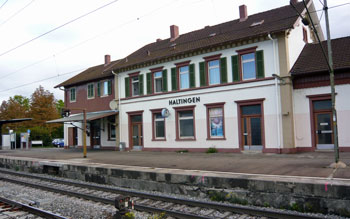
Let’s say you are heading from Amsterdam to Hamburg tomorrow morning. The 09:00 train you planned for might seem a bit ambitious after a long night out, so you can instead opt for the 10:00 or 11:00 train. As long as you walk into Centraal Station 10 or so minutes before departure, you are on. If you are flying you can’t change your ticket, and if you are buying train tickets as you go you have to be in line at the international desk at the train station at least 30 minutes early, and even then you might miss it if they are busy.
Freedom and getting to feel like a big shot
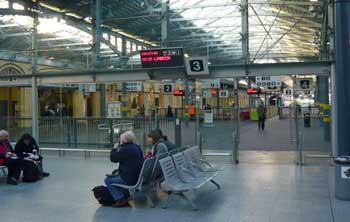
Let’s say you are staying at a hostel in Brussels, and two groups of new friends suggest that you go along with them to their next stops. One group is going to Bruges, which is a short and cheap journey, so you can join them by buying individual tickets (unless you have the unlimited pass, making it free). Then you restart your trip from Bruges, on to your next destination. The other group is headed to Berlin on a night train, which is long and expensive, but with a Eurail Pass you don’t even have to think about the cost. On you go, just like a rich person.
Buying a Eurail Pass is great for those who might run out of money
We all know people who keep meticulous track of every penny they spend, and who are always putting money away for a rainy day. And we all know people who can take a US$100 “entertainment fund” and burn through almost all of it in just a few hours. For the first type of person, a Eurail Pass can help you keep track of expenses, but it’s really the second type of person these are best for.
It’s sad to hear about people who have big plans to see their dream destinations, but they run out of money for transportation halfway into the trip, so they have to just stay put until they fly home. It happens. Locking in your major transportation costs before you leave home, and probably saving money in the process, is a wise move for anyone who isn’t as disciplined as they’d like with their money.
>>>Check prices on Eurail Passes
Bottom line: If you want to keep travel costs down, your choices will usually be a Eurail Pass or buying tickets at least a month or more early
In the last few years, almost every long-distance train ride in Europe has switched to a pricing system similar to low-cost airlines. In other words, tickets go on sale 2 to 6 months ahead of time at very low prices, and they keep getting more expensive as the train fills up and the date approaches. For most trips where a rail pass is possible, this is how things stack up:
Cheapest possible way: Buy advanced (non-refundable, non-changeable) train tickets at least 30 days in advance
Next cheapest way: Buy a Eurail Pass and make seat reservations as you go, usually only a day or less in advance.
Most expensive way: Buy train tickets as you go, or less than a week in advance.
Thinking about it this way should make the choice a bit easier. If you are the type who likes to plan each day and travel segment long before you even leave home, then buy tickets online for the best prices. This can be the best strategy for most shorter trips (10 days or less) because you simply don’t have enough time to change many things as you go anyway.
Buying a Eurail Pass won’t be quite as cheap, but you are buying a LOT of flexibility with the extra money. If you dream of making up your plans as you go, or even making up your plans just a few days in advance, this is almost always your best bet.
But if you wait too long, and just show up looking to buy train tickets as you go, they are going to cost a fortune. As recently as only a few years ago all seats would be the same price on many rail systems, so you could always just wing it. When each country computerized its rail systems so they can sell advanced tickets cheaper, they also had to keep track of seat reservations, so the whole pricing structure had changed to favor advanced ticket buyers and rail pass holders over those who’d prefer to just hop on any train as it is leaving the station.
Have a rail pass or itinerary question of your own?
It wasn’t planned but scores of people began asking me rail pass and itinerary questions at the bottom of this article and a few others. I’m happy to keep answering them and now I’m trying to organize them better as well so they are easier for other people to find.
If you have a question about specific types of European rail passes, please ask it in the comments below.
But if you have a question more about a European itinerary or other non-rail-pass questions, please click over to the European itineraries Q & A article and ask in the comments of that one.

Hello,
Your site is VERY helpful!
I’m planning to go from Hamburg to Istanbul from June 26th till August 27th and I can’t decide if I should get a Eurail pass. I’ve gone through Western Europe with Eurail before and it worked pretty well but now I’m just not sure. I’m thinking either the 10 days in 2 months or 15 days in 2 months.
My very rough itinerary
Hamburg>Berlin>Prague>Krakow>Vienna>Budapest>Zagreb>
Ljubljana>Zadar>Split>Dubrovnik>Mostar>Belgrade>Cluj Napoca>Brasov>Veliko Ternovo>Istanbul
Knowing that Bosnia And Herzegovina and Serbia aren’t covered, and that some of the trip in Croatia is not possible via train, what do you think my best option is? The Eurail pass for the freedom sounds nice. I had considered the 10 day pass and use that up until Bosnia and then just buy tickets from then on because of the cheap prices in Romania and Bulgaria but I really can’t decide. Sorry for the rambley post. Any advice will be greatly appreciated.
Cole,
This one is a pretty easy call because only your first couple of train rides would be expensive on their own, and by the time you leave Split there is little or no train service. In other words, forget about a rail pass for this trip. Buy those first two train tickets well in advance for the best fares, and after that they’ll probably average around €30 at the most, and probably less.
The trains between Budapest and Zagreb are decent, if a bit slow, but once you are south of that they are really slow. Buses are the best option in this whole region, with more frequent service and much lower fares. You’ll be able to take buses all the way into Istanbul, and they will probably average €10 to €15 per ride. Bus fares in that part of Europe still tend to be the same no matter when you buy, so you can just buy them as you go for the most part. The buses are pretty comfortable as well, especially once you get into Turkey. Also, if you are going that far, you might also think about a couple days in Cappadocia, which is easy to reach by bus from Istanbul.
Feel free to follow up if you have other questions or I missed something. -Roger
Thanks for the quick reply!
How much do you anticipate the train costing for Hamburg>Berlin and Berlin>Prague? What is the price difference if I buy tickets online now or if I buy them at the station a few days before leaving? Anything else you recommend seeing along the way? Also – sorry for all the questions – is their any risk of buying tickets at the station the day I plan to travel along this trip;is it going to cost more/will seats be available if i just show up to the station 30 minutes before departure?
Thanks again,
Cole
This is an amazing website.
I would really love to get some advice on our upcoming travel to Europe this September.
We plan on spending 21-24 days in Europe visiting the following cities.
Paris
Amsterdam
Lucerne
Venice
Florence
Rome
Barcelona
Back to Paris.
Would really love to hear your opinion as to how many days you think we should spend in each city and whether we should get a Eurail pass. We love flexibility but then not sure how to go about hotel reservations and be flexible at the same time. Your advice will be much appreciated.
Elena,
Thank you for the kind words. This looks like a really well thought out itinerary, and I think you are giving yourself just the right amount of time for the whole thing. But it’s not really a good itinerary for any of the Eurail Passes that are available. First though, here are my recommendations about how long to stay in each place:
Paris – 4 nights
Amsterdam – 2 or 3 nights
Lucerne – 2 or 3 nights
Venice – 1 or 2 nights
Florence – 3 or 4 nights (maybe with side trip to Pisa and/or Cinque Terre)
Rome – 4 nights
Barcelona – 3 nights
A combination along these lines should nicely add up to 21 to 24 days. Of course you can divide your time in Paris between your first stop and last stop. I think those minimum number of days I recommend will be enough to see the main famous sights that are so worthwhile, and any extra days could be used for day trips or further exploration of whatever appeals to you most.
You will be covering too many countries in too few journeys in order for a Eurail Pass to make sense. In other words, those are good for trips of at least 10 train rides on broader trips, or of at least 5 train rides if you are sticking to 4 or fewer countries.
What I’d recommend is this:
Paris to Amsterdam: Buy a train ticket at least a couple months in advance for a good fare (from https://www.ns.nl/en/travellers/home)
Amsterdam to Lucerne: Fly from Amsterdam to Basel on EasyJet (tickets are US$47 one-way if you buy way in advance), and then a train from Basel to Lucerne.
Lucerne to Venice: Take the train, changing in Milan. Buy early for the cheapest fares.
Venice to Florence to Rome: These will be fairly cheap train rides (about €50 each), which are even cheaper if you buy a month or two in advance (around €20 each) from the Italy rail official site.
Rome to Barcelona: A train would take a very long time and require several changes so you are best off flying. Ryanair starts at US$63 for advanced tickets on nonstops for this route. A train would cost much more.
Barcelona to Paris: There is a new high-speed train on this route, with tickets starting at €59 for advanced purchases. If you are flying home from Paris on the same day it might be better to just fly from Barcelona, as long as you can go into the same airport you are flying home from. But if you are going to spend another day or two in Paris before flying home, the train will be cheaper and better.
In September you won’t have trouble making hotel reservations as you go. I’m actually touring some parts of Europe for the first time this September and October myself, and I prefer to book only a few days early in most cases. The crowds really thin out in September (compared to August) in most European cities, and few hotels sell out more than a day or two in advance.
What I like to do with hotels is at least check rates for my approximate dates well in advance, so I have an idea of how much rooms will cost, especially those with better locations. If it looks like there are many places available with good locations and in similar price ranges (and this should be the case in September) then I wait until I’m sure of when I’ll be arriving to make a reservation. For example, you might lock in your days in Paris, Amsterdam, and Lucerne because you’ll already lock in your transportation, so you might as well reserve those hotels early. It’s very rare that a hotel will get cheaper as the dates approach.
But you might want to stay in Lucerne for 2 or 3 or 4 nights, so you won’t book your Venice hotel until you’ve made that decision. In my own experience, I usually know how long I want to stay in one city shortly after I arrive. So you arrive in Lucerne and decide you’ll spend 3 nights there, and then 1 night in Venice, and 3 nights in Florence. Now you can reserve all those hotels to get the best available deals on places with good locations.
The bottom line is, the earlier you decide on your arrival date, the better choices and better rates for hotels you’ll have access to, but that time of year it shouldn’t change too much, and there is no chance that you’ll have to sleep in the park or something. Best of luck. -Roger
You truly are amazing! Thank you so much!!!
Hi Roger, thank you for your insightful article and thoughtful comments!
My friend and I will be backpacking for 14 days in Europe and we would really appreciate your advice to see how we should spread our days out or any cities we should also check out. Here are some places we were thinking of going:
(Flying into) Netherlands – Amsterdam
Germany – Frankfurt, Stuttgart, Munich
Czech Republic – Prague
Austria – Vienna
Is the 5 days 4 countries Select pass suitable and most cost effective? Will I be able to travel within the countries such as Austria and Czech with this pass or do I have to travel by other alternatives?
Thank you!
Charlotte,
Always happy to hear that this information is useful. I’d plan for 3 nights in Amsterdam. It’s not a big city, but there is plenty to see and it’s a major highlight on your list.
I feel compelled to mention this whenever I see Frankfurt on an itinerary. It’s not really a tourist city (in spite of its huge airport) so I don’t recommend it unless you have something specific there you want to see. Stuttgart is kind of the same, in that it’s a big draw for Porsche and Mercedes fans (both have museums there), but for non-car people there are probably better choices. You might have seen my article on where to go in Germany, which could provide some interesting alternatives. I’d actually recommend Amsterdam to Berlin (3 nights) to Munich (2 or 3 nights) for the most highlights. You might even be able to sneak in one night in Rothenburg ob der Tauber.
Another possibility to consider is Salzburg, Austria (2 nights) instead of Vienna. It’s a gorgeous and very interesting smaller town that could be a nice change from the big cities you are visiting, and it’s also more on the way. Either one would be great though.
If you went to Berlin, you’d probably be better off doing Berlin to Prague (2 or 3 nights) to Vienna (2 or 3 nights) to Munich (2 or 3 nights). From Munich back to Amsterdam could be done by a faster day train or a slower night train.
I do think that a 4-country Select Pass would be very good value on a trip like this. Belgium, Netherlands, and Luxembourg all count as one country (Benelux), so you’d choose that, Germany, Czech Republic, and Austria. You have to buy a minimum of 5 “travel days” and that would probably work for you. You’ll need seat reservations on those trains, which cost around €5 each, but you can get those on travel day or the day before.
The other option to keep train costs down would be to buy all of your tickets online at least a month or more in advance. They are non-refundable and non-changeable, so you are locked in for your whole trip. Some people prefer that, but it feels like most people prefer being able to change plans as they go, which is possible with a rail pass.
That should provide you with some options to consider. I think in 14 days it’s wise to shoot for 5 cities at the most, although you could add in one more small one for an overnight visit and still be okay. Feel free to follow up if you have other questions. -Roger
We just got back from France and Germany and I would highly recommend NOT buying Eurail passes. In France we never were able to reserve a seat on a fast train. We had to pay about $270 in extra fees, on top of our costly Eurail passes. It was a nightmare. It’s not like it used to be, hopping on a train without a care. The Eurail site is not clear about the problems one can encounter. And we traveled off season!
Ann,
You make a good point in that Eurail Passes aren’t what they used to be, but don’t forget that the whole system changed at the same time. We used to be able to hop on almost any train, and they all used to cost the same no matter when you bought your ticket. Now, your options are to buy non-refundable tickets at least a month in advance to get a decent fare, or get a Eurail Pass and make reservations a day before you want to go. France does have a pass quota on many high-speed trains, but they also charge a fortune for seats without a pass. -Roger
Hi Roger,
Planning a European trip early Sept 2014 for 4 weeks.
Fly in to Dublin- stay 3 nights
Madrid
Barcelona
Rome
Naples
Venice
Paris
Dublin – fly out
How many days stay in each city do you recommend, and what type of rail pass is best for this itinerary. Can I squeeze in another city in this trip or do I need to defer any. I appreciate your help.
Best regards,
Tess
Tess,
As I’ve mentioned before, Ireland is a country where most of its charms are outside Dublin, so hopefully you’ll be exploring at least a little bit. After Dublin, you’ll want to fly to Madrid, of course, and I’d recommend at least 3 nights there. You can take a high-speed train to Barcelona, which is also worth 3 nights or more. Buy that train ticket a month or more in advance for a good fare.
From Barcelona you’ll be best off flying to Rome because the train would be expensive and a very long ride. Once in Rome, you’ll want to spend at least 3 nights, and 4 might be better. From Rome you can take a cheap train to Naples, where 2 nights should be enough time to see the city highlights and also visit Pompeii. From Naples you will take the train to Venice, and like the other journeys, it will be cheapest if you buy it online at least a month in advance.
Venice is crowded and expensive and also quite compact, so many people enjoy a stay of only 1 night, although in 2 days you certainly won’t get bored. If you do stay one night it’s best to pay a bit more to stay on the main island, where you can enjoy the less-crowded evening and early morning, rather than save a bit by staying on the mainland and being caught in crowds all day and all night.
From Venice it’s probably best to fly to Paris, and there are 2 local airports that might have cheap flights, plus Milan not far away as well. A train ride would be long and expensive, although it will be much less expensive if you buy it at least 2 months in advance.
You’ll want to spend at least 3 nights in Paris, and 4 would be better. Adding all of those up, and we get a minimum of about 18 days. Since you have 28 days, you have plenty of options for staying longer or adding more places. With this itinerary, especially with a few cheap flights mixed in, there are no rail passes that would work for you. Even if you added a couple more stops, I don’t think a rail pass would work, so I’d think about adding places that are close to being on your route already.
As mentioned up top, I’d think about seeing more of Ireland by adding 2 or 3 more days there. You could take a train over to Galway and the Cliffs of Moher, and/or head down to Kilarney or one of the other highlights. You might also add 2 days in Florence, which is actually far more popular with tourists than Naples. It’s really worthwhile, and you’ll be passing right through it anyway. One other option would be to add 2 or 3 nights in Nice, France, which you could reach by train between Venice and Paris. You probably have enough time for two of these possibilities if you are motivated.
The easiest thing to do is probably to just add one more night in each city. You certainly won’t get bored in that extra day, but 3 days really is enough for a quick visit to most of these, so I don’t think that would be trying to see too much. Hopefully this is the sort of advice you were looking for. Feel free to ask any other questions as you have them. -Roger
Roger,
I appreciate your quick response and the information you gave is what I need to work out the details of my trip. So glad I did not order the rail pass yet, I thought the 10-days 4 countries Select Pass would work. I definitely will stay extra days in Ireland to see the places you suggested. I planned to stay 5 days in Madrid and 5 days in Barcelona, will go to Florence instead of Naples and stay extra days in Rome and Paris add Nice.
I am learning a lot from reading your replies to your readers’ comments. Thank you so much!
Tess
Planning 10 days: Amsterdam – Prague – Krakow – Budapest – Amsterdam.
Train advice?
ernest,
With only 4 legs in this trip, there really isn’t a rail pass that will help you. So one option would be to buy all of your train tickets well in advance for the best fares, particularly Amsterdam to Prague. Or what I’d really recommend would be to fly from Amsterdam to Prague (on EasyJet for US$73) and then take trains from there. You could take trains all the way back to Amsterdam, or just do a Amsterdam to Prague return trip, and go to Krakow and Budapest and back to Prague by train.
Those train journeys between Krakow, Budapest, and Prague would be fairly cheap if bought individually, and the earlier you buy them the cheaper they will be. -Roger
Even with a 1st class Eurail pass, the 1st class lounges in major train stations are not available to you (at least in Germany. Why is this so?
Bob,
I’ve never looked into this until now, mostly because I’ve never had the need for a luxury lounge between train journeys. My best guess is that a country like Germany looks at 1st Class rail passes as a way to make some extra money for seats that would be empty, but they really make money by selling 1st Class tickets at full price to business travelers. I know many of those lounges offer “free” drinks and food, and those things cost money, which are paid for by the expensive tickets. -Roger
Hi Roger,
Great resource you’ve got here, really appreciate it. Have a couple of questions regarding a tentative itinerary for travel to Europe June/July 2014. I have just over 3 weeks and would like to tour France, Italy and Spain.
As a 25 yo, which pass would you recommend fits the bill? Secondly, are there any changes you would recommend to my itinerary for a first time traveller to Italy and Spain (have been to France briefly). I may be trying for too much, yet I’d love to see more of Italy (Florence/Rome) if I can work it into the schedule. That said I am mindful of excessive time spent in transit. Are there other areas I could defer to next time?
Flying into Paris 24th June
Paris
Milan (+ Florence/Rome if time permits?)
Nice
Avignon
Barcelona
Madrid
Pamplona
San Sebastian
Biarritz
Paris 15th July – Flying out
Kind regards.
Graham,
At first glance, I do think you might be attempting too much here. Even without going to Florence or Rome, you’d have 9 train journeys in a space of about 20 days (assuming you’d stay in Paris for 3 days first). As I’ve mentioned recently, a travel day isn’t really a sightseeing day, so the more days you spend on trains and in train stations, the fewer days you have to see the sights you are there to see.
Also I want to point out that Milan is an unusual choice for a single stop in Italy. The Big 3 are that way for a reason, as Rome, Venice, and Florence are all world-class destinations. Milan has a great cathedral, an interesting shopping center next to it, and the Last Supper, but otherwise the highlights are thin and it’s not very “Italian”. So if you have something specific in mind for Milan, then I’m sure you’ll love it. But don’t choose it just because it’s the closest or has cheap flights. If you did want to visit those other cities, you’d want 3 days in Rome, 2 days in Florence, and 1 day in Venice. If you don’t want to spend at least 6 days in Italy, you might be better saving it for a future trip.
You mention that you’ve been to France before, and that might mean that you’ve already explored Paris. If so, great, but if not, I’d say you’d want at least 3 days there, if not 4. Nice is another highlight, and you’d want at least 2 days there. Barcelona and Madrid are both quite large, and you’d want at least 3 nights in each of those. That still gives you enough time for a day or two in those smaller places, unless you want to spend more time in Italy as discussed above.
As for getting around, if you want to include Italy on this trip, it’s probably best to fly there from Paris and then take trains from there. You could also do a night train from Paris to Rome or Milan, although I think you have to reserve that well in advance.
For train tickets you have two basic choices if you want to keep it cheap. One is to buy all of your (non-refundable, non-changeable) train tickets online at least a month or more in advance so you can get discounts. The other way would be to buy a Eurail Pass, and then the only thing you’d need to worry about would be seat reservations. The seat reservations are compulsory on most long-distance trains in Europe, but they only cost around €5 each and are usually easy to get on travel day or the day before. So a Eurail Pass might cost a bit more than buying all of your tickets way in advance, but it allows you do be spontaneous, which is a great value when touring Europe.
As someone under 26, you can qualify for a 4-Country Select Youth Pass with 8 (US$483) or 10 (US$551) travel days out of 2 months. When buying that Select Pass, it will ask you for the 4 countries you want it to be valid in. You’ll obviously choose France, Italy, and Spain, and then you can just choose any other country that borders one of them as the 4th country, which will let you travel in that country for the same price as well.
The itinerary choices will be yours to make, of course, and I think you are better off either spending more time in Italy or saving it altogether. Feel free to ask any other questions if you have them. -Roger
Hi Roger,
Thankyou for your reply to my earlier post – extremely helpful and motivation to think it through a bit better. I am looking at an 8 days / 2 months 4-country Youth select pass with a revised itinerary below. I may even look at cutting to 7 travel days and culling a destination if it makes for a better trip.
Paris
Florence (skip Rome/Milan/Venice)
Nice
Avignon
Barcelona (skip Madrid)
Pamplona
San Sebastian
Biarritz
Paris 15th July – Flying out
This being my first time in Italy and Spain and wanting to minimise travel days and transit time. Additionally, a preference for destinations where walking long distances on foot is the way to go. Please advise if, on your ‘first trip’ you would adjust the above (for instance, to include Madrid or Venice at the expense of other cities).
Kind regards,
Graham
Graham,
I think this new itinerary looks well thought out, and logistically quite sound. Also, I can’t think of anywhere in Europe where walking long distances isn’t the best strategy. In other words, there are no cities like Los Angeles or Dubai where walking is for suckers.
The only remaining issue would be evaluating the worth of each of the stops you have in mind. This is tricky because it’s natural for me to encourage people to visit the places that get universal acclaim, but also tend to be touristy. Having seen at least a dozen TV shows featuring the Running of the Bulls, I’m not interested in going there for that event, but that doesn’t mean that you shouldn’t want to go.
So with the above in mind, I’ll mention that I have a list of the 5 Great cities in Europe to see first. On it I mention London, Paris, Amsterdam, Rome, and Venice. In my opinion, which is shared by many Europe experts, Rome and Venice are the most amazing and unforgettable cities in Italy, and Florence is a really nice place to stop in between, and also a top-tier destination in its own right.
The other one I’ll throw out there again is Madrid, which I’d probably put in the Top 10 of Europe, along with Barcelona (or at least the Top 12 or 13). Both of those cities are large, important, and quite different from the other. I would normally encourage someone to hit the main highlights before going to “lesser” destinations in the same country, but you probably have good reasons for choosing the places you have. Assuming you chose as carefully as it appears, I think you’ll have a great time. As always, feel free to follow up if you like. -Roger
For the sake of not sounding long winded, I will try to keep this short and to the utmost point as possible. Hi everyone, I am using my wife’s account in hopes to have some queries answered. My wife has an upcoming birthday and I would love to surprise her with a trip to London and Paris. I know this is definitely 2 expensive cities but I would like to keep a budget. Considering we’ll be flying from atl, one of the most expensive annoying airports: my budget has been bitten quite spectacularly by flight accommodations in cattle class. Haha!
Onward to why I’m here. I have no clue even through massive research for months, believe it or not from reading blogs, having trip alerts, lurking this forum and flyertalk.. I am still at a complete halt as to what to do or plan. We are major foodies, and my wife loves photography. I know her goal is to visit and take in the sites from what she has said are local point of views not tourist traps. Whatever that means. I am just requesting if it’s not too much of a bother a nudge from you seasoned travelers on how I should build an itinerary that actually is doable.
I am looking at Eurostar tickets and am confused as to whether I book first class since we’re over 26 for London to Paris. Our duration will be 8 whole days and I know she would love to see nice, France plus Versailles as well. I ask for your help earnestly, any advice on accommodations, stress free travel, suggestions and what not would be so valuable to me as I hope to pull this off for her birthday. This trip is planned for June, late June. Real close I know but I am willing to reschedule all the way up to sept if it proves to be wiser to do so. Please help me out.
I hope this inquiry made sense.
Also thanks man for all the info and taking time to answer questions, you really make a difference!
William,
I understand how stressful it can be to plan something like this, especially when you are trying to keep it a secret as well. But most of this is really straightforward and I’ll be happy to help you.
With 8 days to spend, you have two primary options. One is to fly to London and spend 4 days there before taking the Eurostar to Paris for 4 days, then returning to London on the Eurostar for a flight home. Your other option would be to fly to London for 3 days, then take the Eurostar to Paris for 3 days, and then take another train down to Nice for 2 days. From Nice it’s best to fly back to London for your flight home, since doing the trains would take much longer and cost more as well. You can see Versailles while in Paris, as it’s on the edge of the city and easy to reach.
Whether going to Nice or not is worthwhile is something you’ll have to decide. It’s a nice place and there is a lot to see, but you’ll kind of have to rush London and Paris in order to allow those days there.
You can book 2nd Class seats on the Eurostar. The “under 26” rule is only for rail passes, and those aren’t valid on the Eurostar anyway. The earlier you buy those tickets, the cheaper they will be (they go on sale 4 months out). It’s worth noting that the 2nd Class seats on the Eurostar are smaller and with less leg room than on normal trains, but it’s a fast ride and 1st Class costs a fortune so go 2nd Class.
It’s challenging to give hotel recommendations without knowing more about your situation, however I do have lists of recommended London hotels and recommended Paris hotels that should at least be a good place to start. All of the hotels on those lists are well-located and and are also good value. Even if none of them seem right for you, at least you’ll know about what you can expect to pay for convenient places.
It’s much more difficult to help you plan your sightseeing itinerary, but one place I will start is to recommend the “free” walking tours in these cities. They are easy to find, really interesting, and the only thing you need to do is give the guide a tip at the end if you liked the tour. Otherwise, you’ll get a lot of what you are after just by walking through the more central neighborhoods, which is another reason why staying in more central hotels usually pays for itself. Hopefully this helps, and let me know if you have more questions. -Roger
Hi Roger,
Please help us in finding the best transportation option for us. My husband and I both in our 30s traveling to Europe for 30 days and here is a rough draft of what our itinerary looks like:
London 3 days
Paris 3 days
Barcelona 2 days
Milan 2 days
Venice 1 day
Cinque Terre 1-2 days
Portofino 2 days
Pisa 1 day
Florence 3 days
Rome 3 days
Naples 2 days
Athens 2 days
Santorini 2 days
London – home
Truly,
Your best transportation options for this trip are pretty straightforward. From London to Paris you’ll take the Eurostar train service. Those tickets go on sale 4 months in advance, and they are cheap if you buy early, yet quite expensive if you wait until travel day.
From Paris to Barcelona there is a new high-speed train, which is also fairly cheap if you buy early. From Barcelona to Milan, you are probably best off flying. Your other option would be to take a series of trains to Nice and then on to Milan. There’s some nice scenery that way, but it’s a long trip (most of a full day) and it would be expensive as well.
Once you get to Italy, you’ll want to take the trains for sure. The nice thing is that train fares in Italy are pretty cheap even on travel day, and very cheap if you buy a month or more in advance. For example, you can do most of those rides in Italy for around €20 per person if you buy 1 or 2 months out, although more like €50 if you buy on travel day. Rail passes aren’t good value in Italy because individual tickets are almost always cheaper.
From Naples to Athens you’ll want to fly. It might end up being cheaper if you take a train back to Rome and fly from there to Athens, so I’d check both ways.
From Athens to Santorini you can fly (30 minutes) or take a 4.5-hour high-speed ferry from Piraeus (the Athens port). The ferry might be more interesting and it ends up taking about the same amount of elapsed time when you factor in getting to the airport early and all that.
From Santorini to London you’ll fly. Both EasyJet and ThomasCook Airlines fly nonstop from Santorini into London-Gatwick Airport. -Roger
Thank you so much for the information you gave us Roger! Sorry for the late reply been busy reading the articles you have here